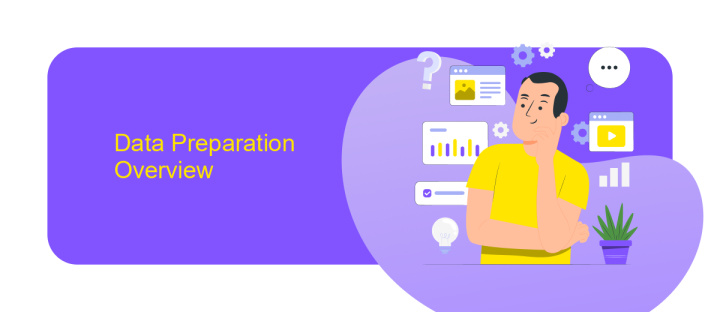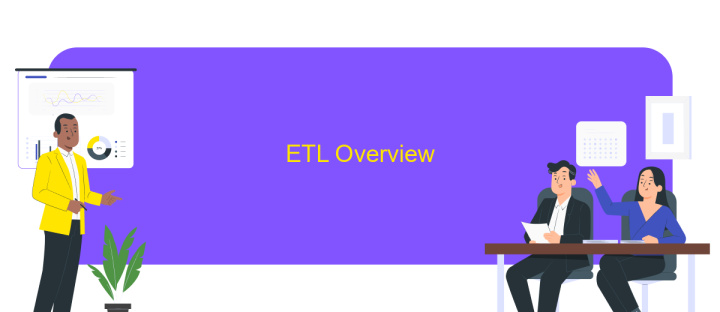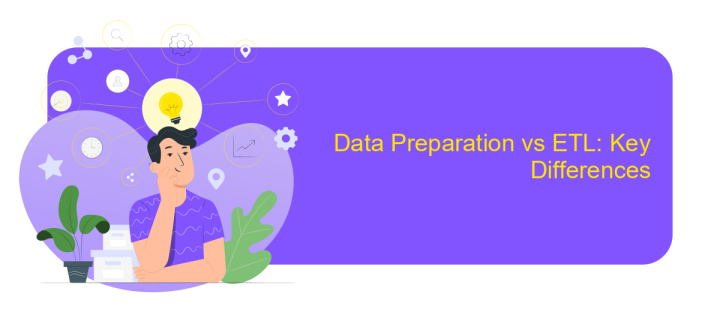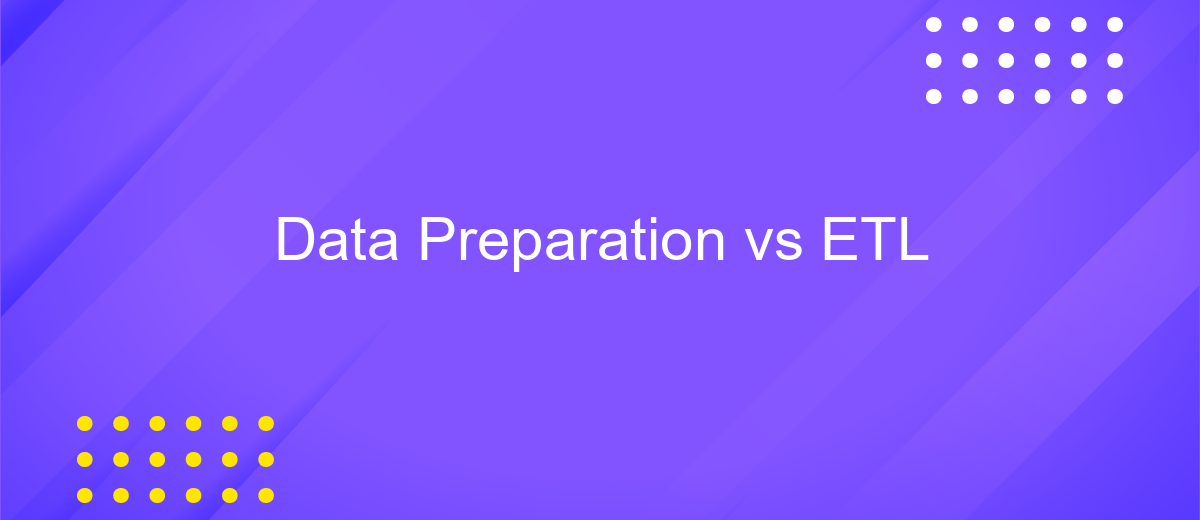Data Preparation vs ETL
Data preparation and ETL (Extract, Transform, Load) are critical processes in data management, each serving distinct roles in the journey from raw data to actionable insights. While data preparation focuses on cleaning and organizing data for analysis, ETL involves extracting data from various sources, transforming it to fit operational needs, and loading it into a target database. Understanding their differences is essential for effective data strategy.
Introduction
Data preparation and ETL (Extract, Transform, Load) are two critical processes in the field of data management, each with its own set of features and applications. Understanding the differences between these processes is essential for businesses aiming to optimize their data workflows and ensure the accuracy and usability of their data.
- Data Preparation: This involves cleaning, transforming, and organizing raw data into a usable format. It is often done manually or with the help of specialized tools.
- ETL: This process involves extracting data from various sources, transforming it to fit operational needs, and loading it into a destination database or data warehouse.
Choosing between data preparation and ETL depends on your specific needs and the complexity of your data. Tools like ApiX-Drive can simplify these processes by automating data integration and ensuring seamless data flow across different platforms. This not only saves time but also enhances data accuracy and consistency, making it easier for businesses to derive actionable insights.
Data Preparation Overview

Data preparation is a critical step in the data analysis process that involves cleaning, transforming, and organizing raw data into a usable format for analysis. This process ensures that data is accurate, consistent, and complete, which is essential for drawing reliable insights. Data preparation typically includes tasks such as handling missing values, correcting errors, normalizing data, and integrating data from different sources. By doing so, it lays the foundation for effective data analysis and helps in achieving high-quality outcomes.
One of the key aspects of data preparation is the integration of data from various sources. Tools like ApiX-Drive can simplify this process by automating the data integration tasks. ApiX-Drive allows users to connect multiple applications and services, enabling seamless data flow between them. This not only saves time but also reduces the risk of errors associated with manual data handling. By leveraging such tools, organizations can ensure that their data preparation process is efficient and reliable, leading to more accurate and actionable insights.
ETL Overview

ETL, which stands for Extract, Transform, Load, is a fundamental process in data management and warehousing. It involves extracting data from various sources, transforming it into a suitable format, and loading it into a target system, such as a data warehouse or database. This process ensures that data is clean, consistent, and ready for analysis, enabling organizations to make informed decisions.
- Extract: Data is collected from multiple sources, such as databases, APIs, and flat files.
- Transform: The extracted data is cleansed, enriched, and converted into a consistent format.
- Load: The transformed data is loaded into the target system for analysis and reporting.
Modern ETL tools, like ApiX-Drive, simplify the integration process by offering automated workflows and seamless connections between various data sources and target systems. These tools help reduce the complexity of data integration, allowing businesses to focus on deriving insights from their data rather than managing the technical intricacies of data movement and transformation.
Data Preparation vs ETL: Key Differences

Data preparation and ETL (Extract, Transform, Load) are crucial processes in data management, but they serve different purposes and involve distinct methodologies. Data preparation focuses on cleaning and organizing raw data to make it analysis-ready, while ETL is a more comprehensive process that involves extracting data from various sources, transforming it into a suitable format, and loading it into a target system.
One of the key differences lies in their scope and application. Data preparation is often a subset of the ETL process, emphasizing the refinement of data for specific analytical needs. In contrast, ETL encompasses a broader range of activities, including data extraction from multiple sources and integration into a data warehouse or other storage solutions.
- Purpose: Data preparation aims at data quality and usability, while ETL focuses on data integration and storage.
- Scope: Data preparation is a part of the ETL process, but ETL covers extraction, transformation, and loading.
- Tools: Data preparation often uses specialized tools for cleaning and organizing data, whereas ETL utilizes comprehensive platforms like ApiX-Drive for seamless data integration.
Understanding these differences is essential for optimizing data workflows. While data preparation ensures high-quality, ready-to-use data, ETL provides a structured approach to integrating and storing vast amounts of information from various sources.
Conclusion
In conclusion, both Data Preparation and ETL (Extract, Transform, Load) are crucial processes in the field of data management, each serving distinct purposes. Data Preparation focuses on cleaning, structuring, and enriching raw data to make it suitable for analysis. ETL, on the other hand, deals with extracting data from various sources, transforming it into a suitable format, and loading it into a data warehouse for further use. Understanding the differences and synergies between these processes is essential for efficient data handling and decision-making.
Moreover, the integration of tools like ApiX-Drive can significantly streamline these processes by automating data transfers and transformations between various platforms. ApiX-Drive offers a user-friendly interface and robust features that facilitate seamless integration, ensuring that your data is always up-to-date and ready for analysis. By leveraging such tools, organizations can enhance their data workflows, reduce manual errors, and ultimately drive better business outcomes.
FAQ
What is the difference between Data Preparation and ETL?
When should I use Data Preparation instead of ETL?
Can Data Preparation be automated?
What are some common challenges in ETL processes?
How can I integrate and automate ETL processes efficiently?
Time is the most valuable resource for business today. Almost half of it is wasted on routine tasks. Your employees are constantly forced to perform monotonous tasks that are difficult to classify as important and specialized. You can leave everything as it is by hiring additional employees, or you can automate most of the business processes using the ApiX-Drive online connector to get rid of unnecessary time and money expenses once and for all. The choice is yours!

